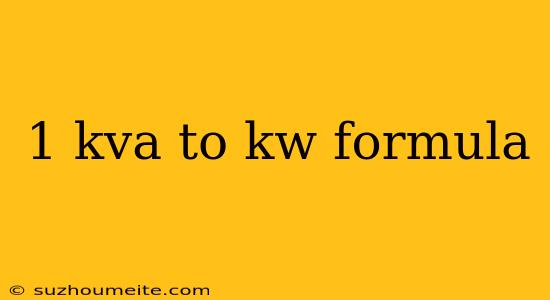1 kVA to kW Formula: A Comprehensive Guide
When working with electrical systems, it's essential to understand the difference between kVA and kW, two commonly used units of measurement. While they're related, they're not interchangeable, and converting between them requires a specific formula. In this article, we'll delve into the 1 kVA to kW formula, exploring what kVA and kW represent, the differences between them, and how to perform the conversion.
What is kVA?
kVA (kilovolt-ampere) is a unit of measurement that represents the apparent power in an electrical circuit. It takes into account both the voltage and current in the circuit, but does not consider the power factor. kVA is often used to rate the capacity of electrical equipment such as generators, transformers, and circuit breakers.
What is kW?
kW (kilowatt) is a unit of measurement that represents the real power in an electrical circuit. It only considers the active power that is actually used by a load, such as a motor or a heating element. kW is often used to rate the power output of electrical devices such as generators, motors, and transformers.
The Difference Between kVA and kW
The key difference between kVA and kW lies in the power factor. kVA represents the total power in a circuit, including both real and reactive power. kW, on the other hand, only represents the real power that is actually used by a load.
The 1 kVA to kW Formula
To convert kVA to kW, you need to know the power factor (PF) of the circuit. The formula is:
kW = kVA x PF
Where:
- kW is the real power in kilowatts
- kVA is the apparent power in kilovolt-amperes
- PF is the power factor, which ranges from 0 to 1
For example, if you have a circuit with an apparent power of 1 kVA and a power factor of 0.8, the real power would be:
kW = 1 kVA x 0.8 = 0.8 kW
Conclusion
In conclusion, understanding the difference between kVA and kW is crucial when working with electrical systems. The 1 kVA to kW formula provides a simple way to convert between the two units, taking into account the power factor of the circuit. By applying this formula, you can ensure accurate calculations and reliable designs for your electrical systems.
